I had intended to mimic Netflix and Amazon and post all our Mongolian entries at one time, allowing people to binge read the entire series or take it one story at a time. Unfortunately, on the day I’d set as the deadline for submission from Doug, Chris, John and myself, we are all pretty brain dead. A six-hour car ride on bumpy roads followed by a cashmere factory tour, a traditional dance and music folk review, shopping and packing kept us busy until nearly midnight yesterday, the last day of our Mongolian excursion. Then we were up this morning at 4:00 am to catch our Aeroflot flight to Moscow. Consequently, Ten Centuries’ Mongolian Series will be released in installments; three posts today, a couple more in a day or three.
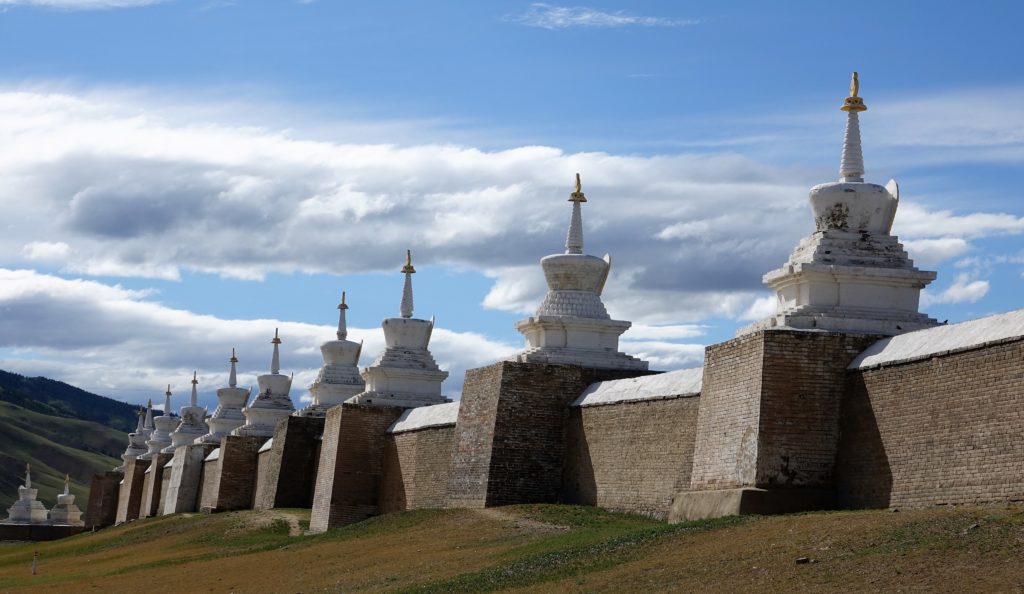
The Erdene Zuu monastery in Kharakhorum.
What is Mongolia like? Vast, mostly empty, mostly treeless. Dense with culture, history and tradition.
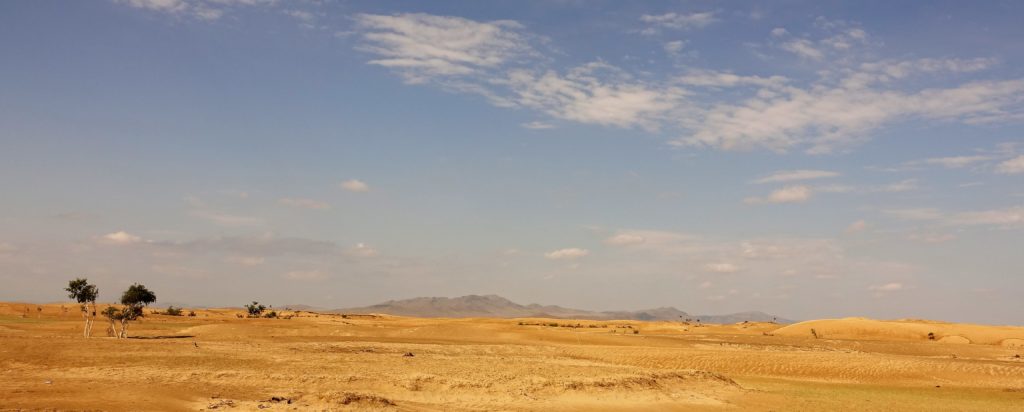
The Bayan Gobi Desert.
Sand dunes, low brush and fantastical, sculpted, pink granite outcroppings and cliffs dominate the Bayan Gobi, where we were for the first three days of riding. Doug and I wiled away some of our hours on horseback trying to figure out the Gobi’s geological origins. We didn’t arrive at any conclusions and our guide couldn’t enlighten us, so we decided it was just beautiful and cool. The landscape is punctuated with springs and marshes that create islands of green and provide life sustaining water to the people and livestock. They also made it possible for us to pitch our tents on cool grass rather than blistering, shifting sand (it was hot in the Gobi!).
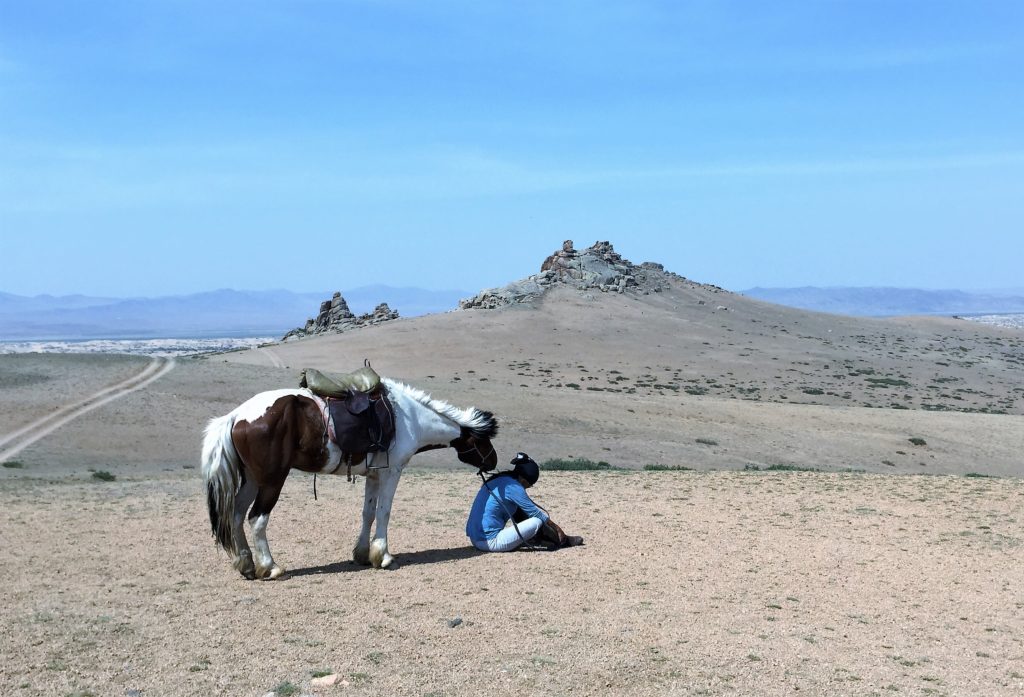
You find shade anywhere you can.
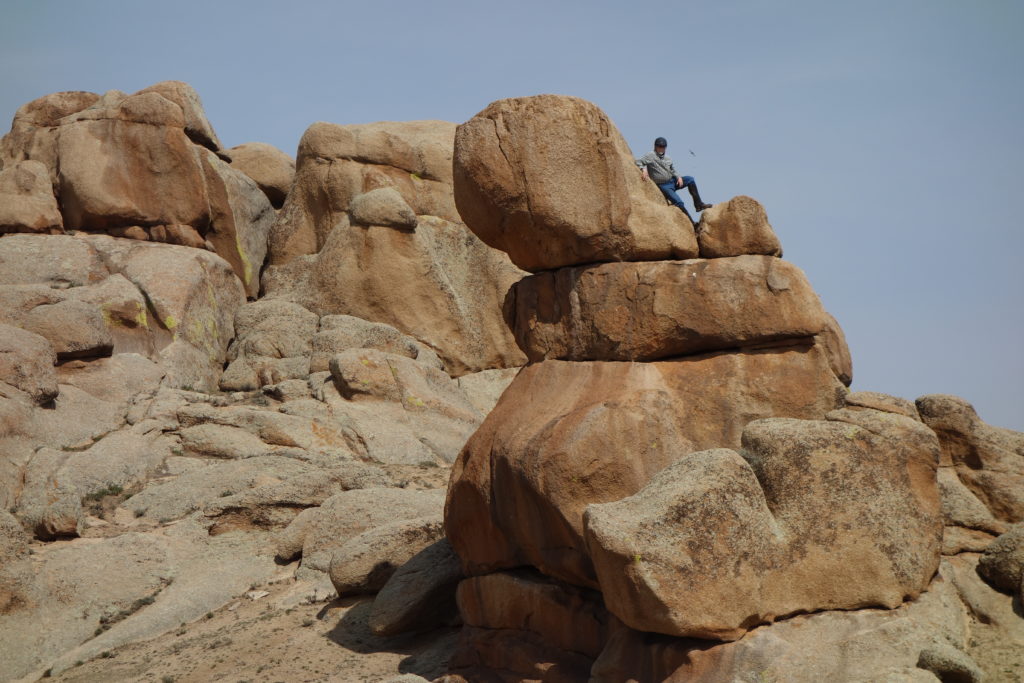
Doug on a sculpted outcropping.
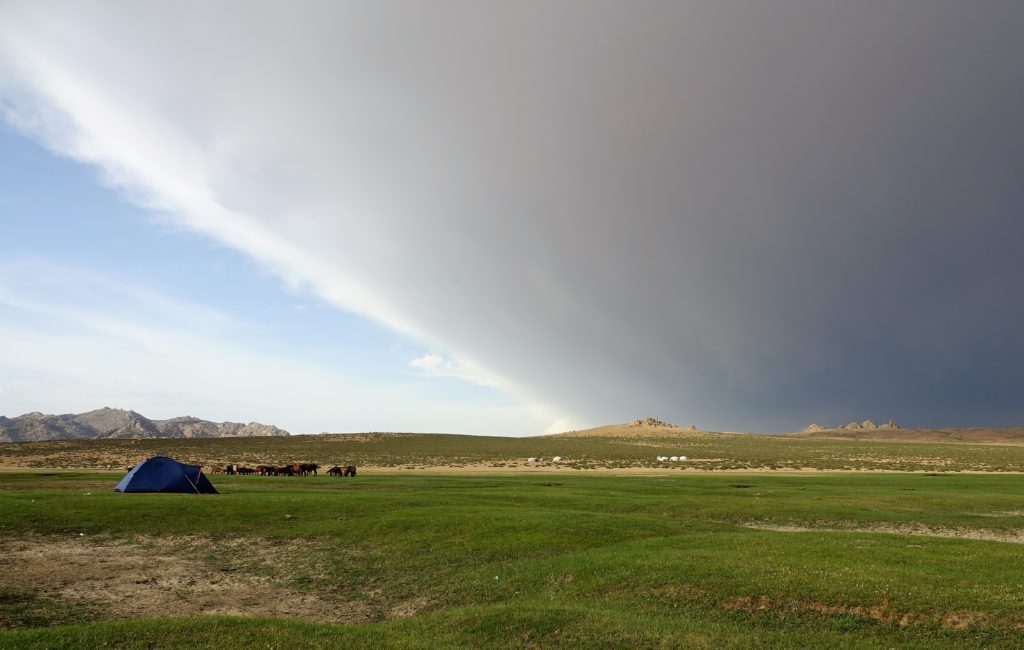
An oasis in the desert.
It was easier to figure out the Orkhon Valley, our next destination.
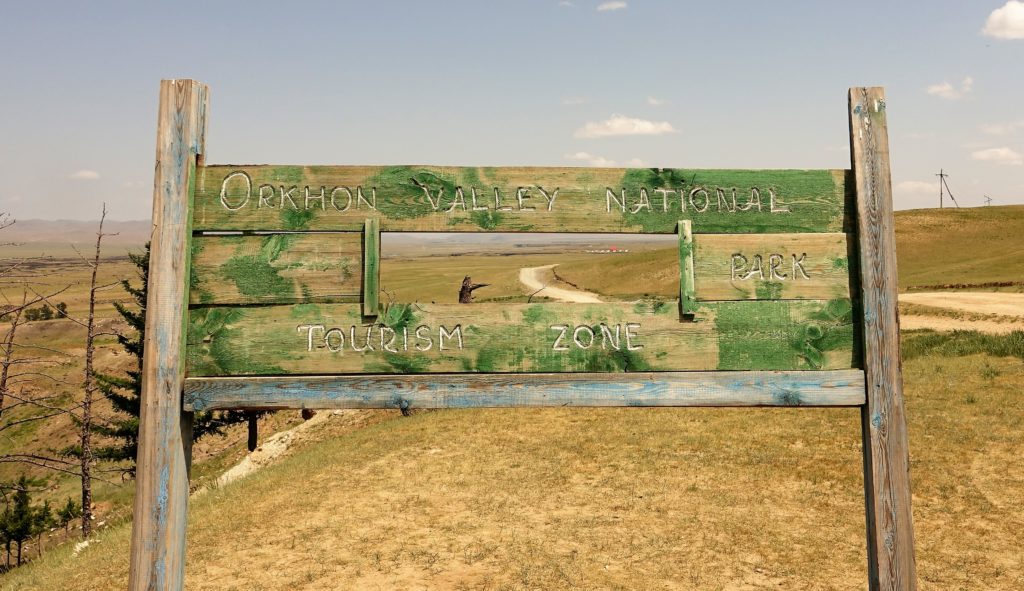
Entering the Orkhon Valley.
The black, cracked, jagged, ancient lava fields, jutting up through the grass that carpets the Orkhon were a dead giveaway. Green is the dominant color. Everywhere there is grass. Everywhere there are animals – sheep, goats, yaks, and horses. Gers (yurts), round and white and festooned with solar panels and satellite dishes, dot the landscape. Ribbons of informal dirt tracks braid through the terrain and serve as roads. In the center of the valley the Orkhon River, Mongolia’s longest river, moves west to east carving its way through the basalt, creating a couple of dramatic waterfalls, and then flows out into the steppes. The valley is surrounded by mountains. Most of them are treeless and grass covered, but some of the higher peaks have dense stands of larch and pine trees. In other places, erosion has exposed dramatic rock outcroppings. The Orkhon is the heart of nomadic Mongolia. Chenggis (Genghis) Khan established his ancient capital on its eastern border, at Kharakorum. It is the place John envisioned when he thought about this trip.
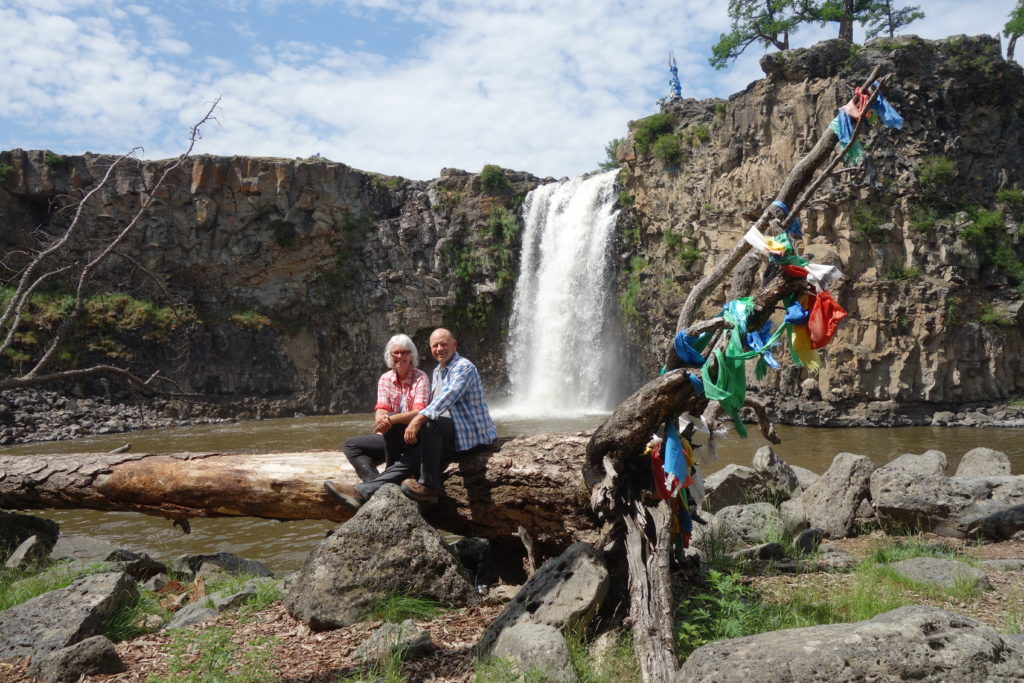
Waterfall on the Orkhon River.
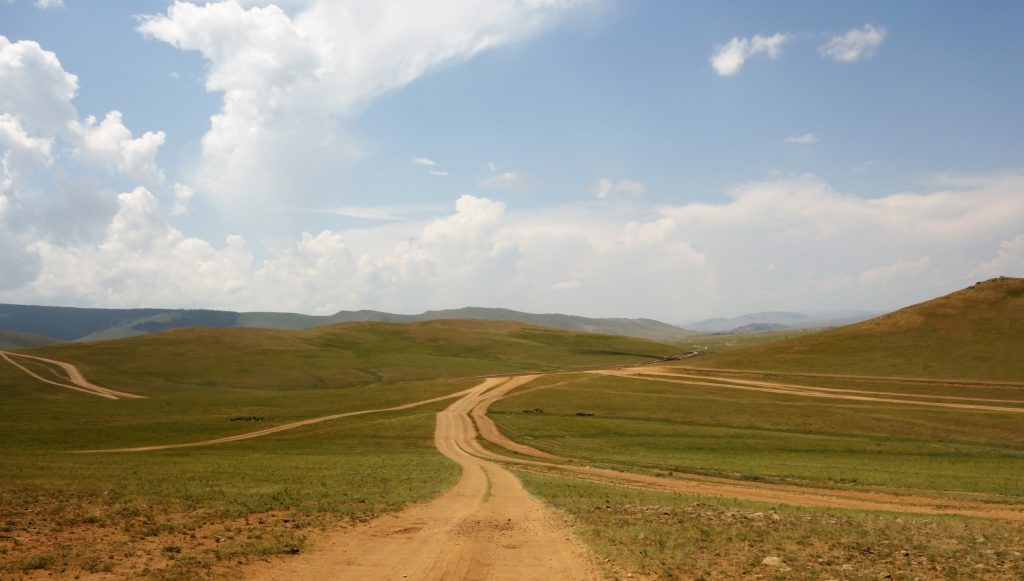
Ribbons of roads. Take your pick.
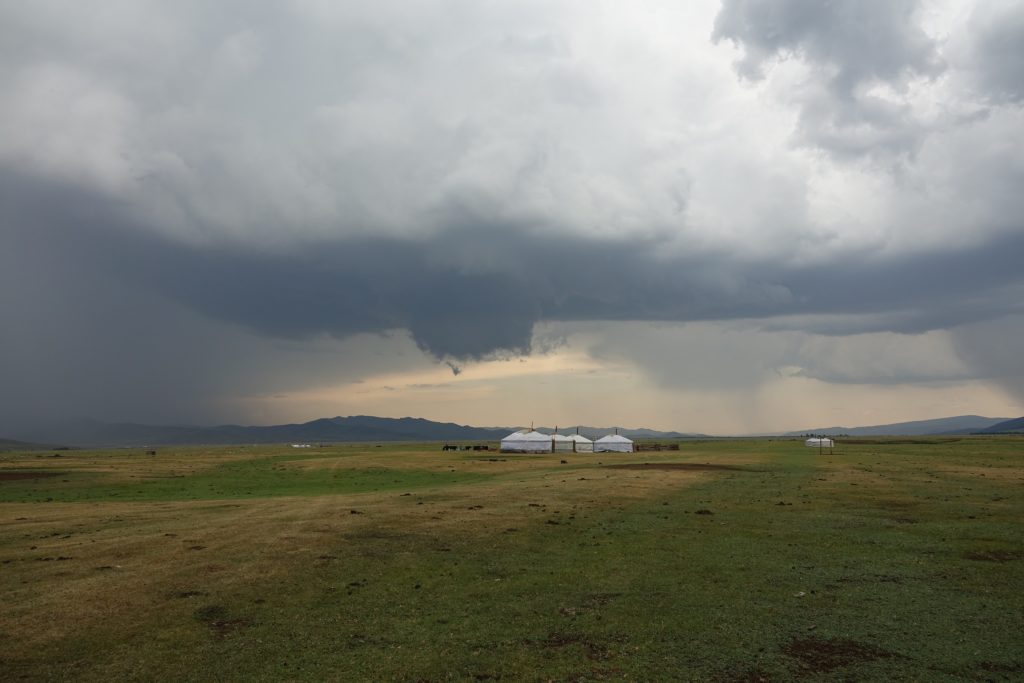
Home on the steppe.
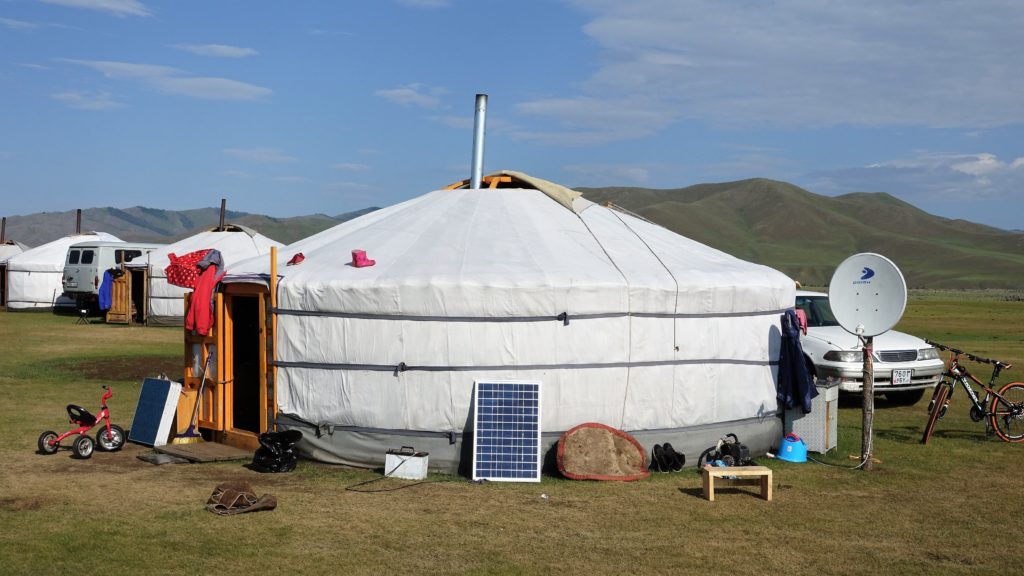
The modern nomad’s home.
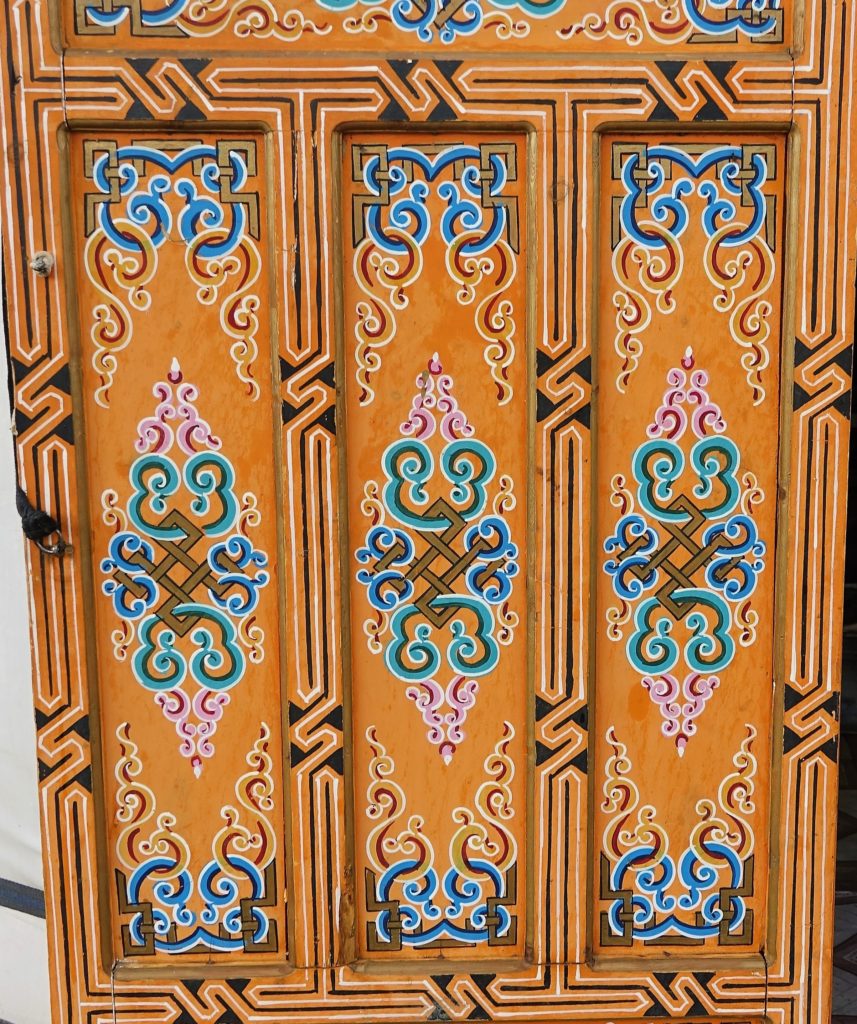
Ger door decorations.
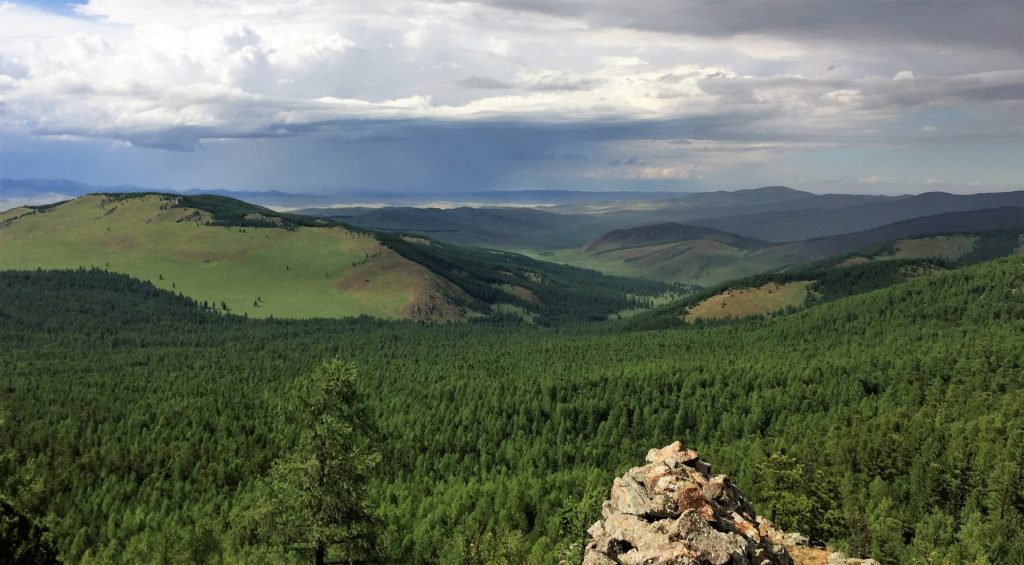
Forested mountains above the Orkhon Valley.
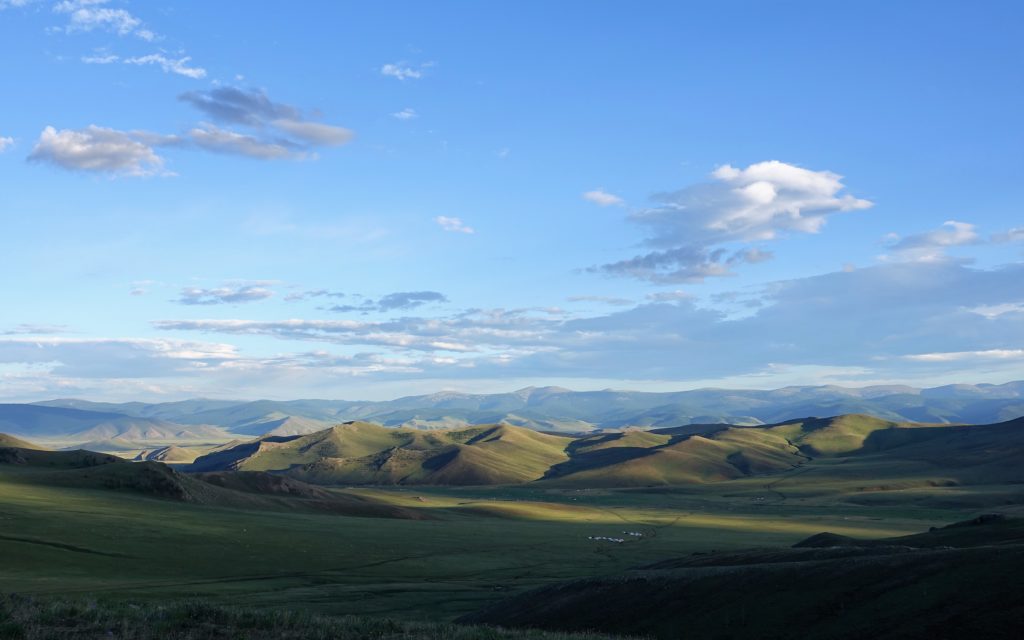
The steppes.
There isn’t much to say about Mongolia’s capital city, Ulaan Baatar. It is a fast-growth, ex-Soviet city in a country where the infrastructure hasn’t caught up to expansion. It isn’t pretty; it’s congested, smoggy and intermingles crumbling Russian concrete structures with modern steel and glass high rises. Ulaan Bataar sprawls outwards into jumbled clusters of dark, primitive wooden houses with bright metal roofs – blue, red, yellow and green – and fenced yards. The government building and central square are exceptions to the overall ugliness. These are clean, classic, dignified and bustling with public activity. We arrived the day before the national presidential election and the square was alive with rallies and speeches. This morning, when we left for the airport, about 1,000 soldiers were marching in formation accompanied by the appropriate military music. An audience of several hundred stood along the periphery and watched (at 4:30 am!).
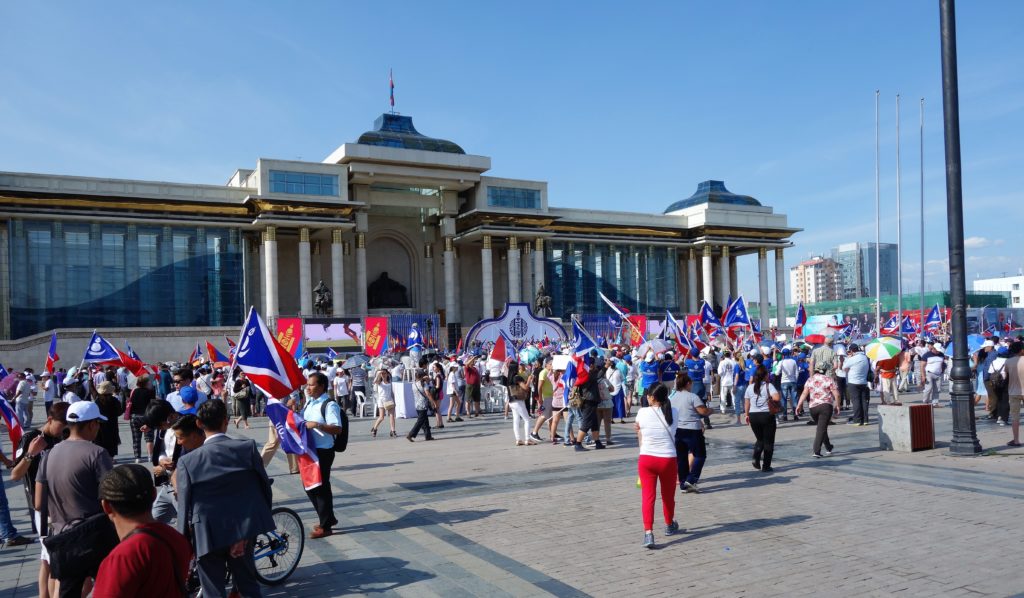
Political rally at the government building.
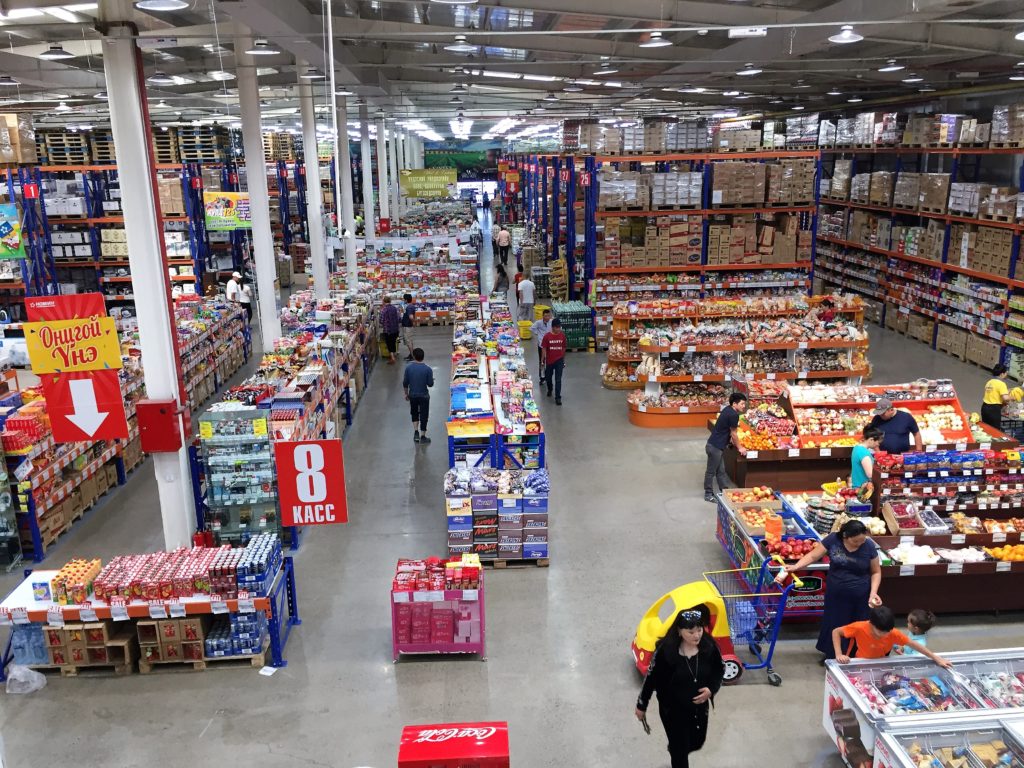
Mongolian version of a Costco.
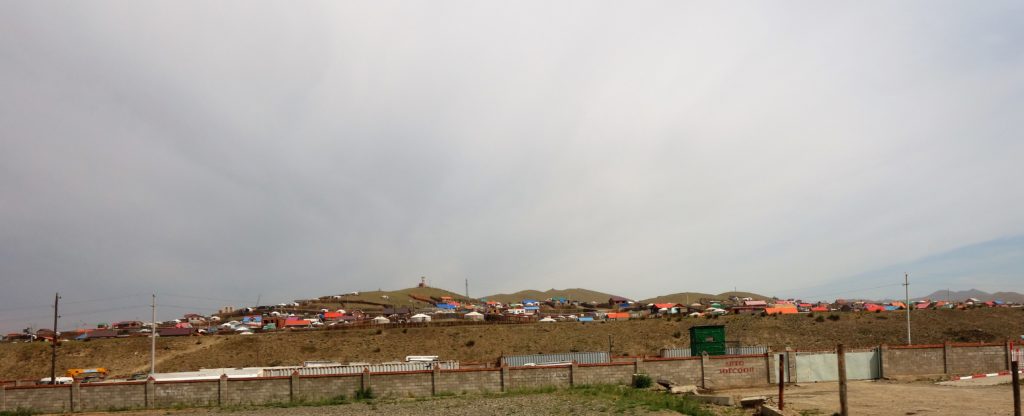
Ulaan Baatar suburb.
We spent 12 days in Mongolia and 43 hours over 8 days on horseback. For each of us it was an intense, immersive, wonderful experience. Read on for more thoughts from Doug, John, Chris and me.
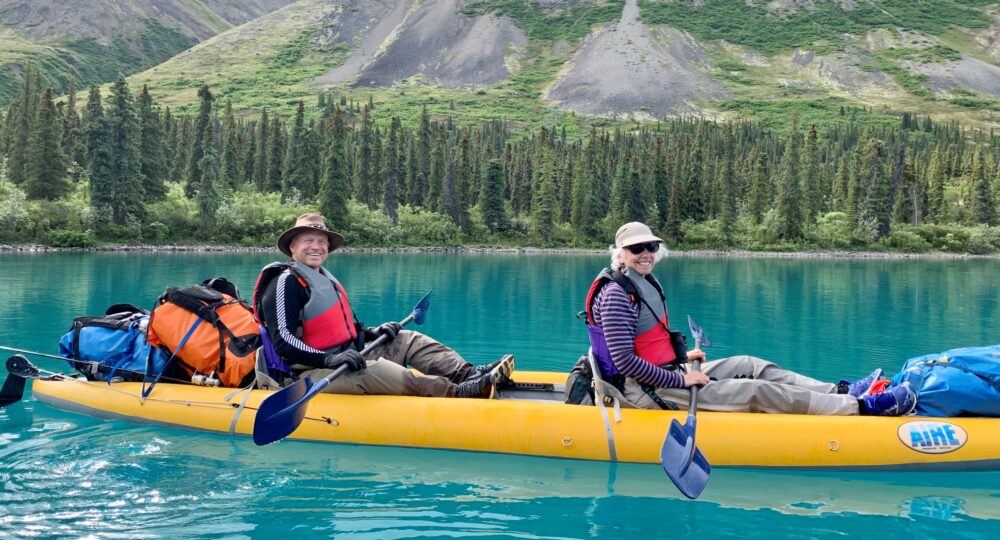
Really beautiful countryside, reading this I realized I had no idea what Mongolia looked like.
So you have forgiven John for dragging you to the other side of the globe to ride horses?
Yes, we want to know! 🙂
Fabulous pictures which I’m sure do not fully capture the vastness and magnificence of the landscape. Keep the posts coming.
So great to read this and hear how it went on horseback. Love, love, love the photos and can’t wait to read more. Cheers from MN!